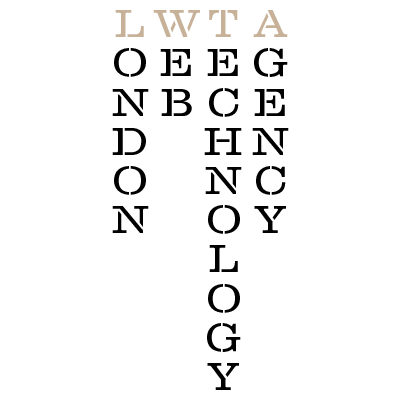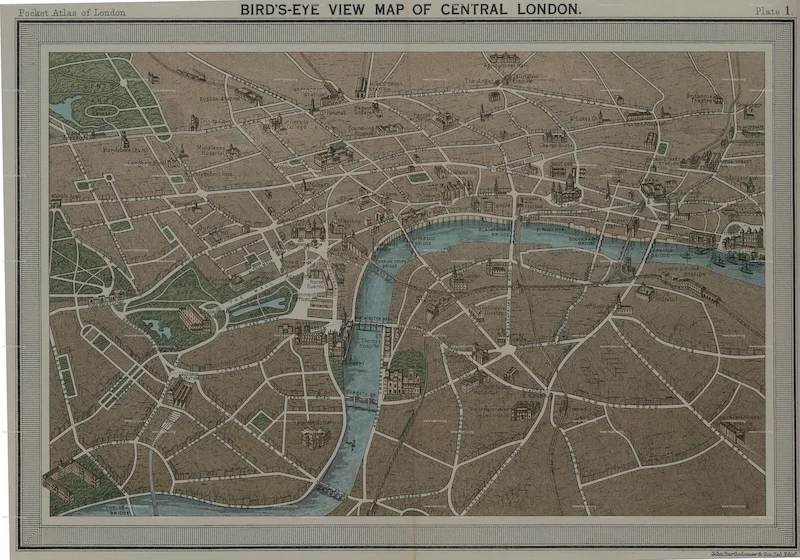The Top Five Ways To Take Advantage Of The AI Tools Explosion
Embracing the AI Revolution
Artificial Intelligence has surged to the forefront of digital innovation, shaking up industries left, right, and centre. As a webmaster or content creator, staying ahead of the curve is essential, and in 2025, AI tools have become indispensable for optimising workflows, enhancing content quality, and boosting productivity. From automated content writing to generating stunning visuals and SEO insights, AI offers capabilities that were once unimaginable.
But, as with any new technology, there’s a fine line between innovation and overdependence. AI tools are not without their challenges—especially when it comes to maintaining creativity and originality. In this article, I’ll highlight the five most transformative AI tools for webmasters and content creators today. I’ll explore how each one can enhance your work and discuss the potential pitfalls, ensuring you make the most of AI while avoiding overreliance.
The AI Landscape in 2025
The Rapid Evolution of AI
AI has come a long way since the early days of chatbots and rule-based systems. The landscape today is dominated by powerful tools that can generate text, create visuals, and analyse data—all with impressive sophistication. In 2025, we’re seeing AI applications in nearly every corner of digital work, making it possible for content creators to produce high-quality material more efficiently.
A few years ago, AI was mainly used for automation, but today’s tools are creative, intuitive, and capable of handling a range of tasks that were once the domain of highly skilled professionals. This explosion in AI technology has made it accessible to all types of creators, from bloggers and marketers to designers and video producers. But with all this power, it’s important to understand which tools are worth your time and investment.
Why AI Is a Game Changer for Content Creators and Webmasters
Webmasters and content creators are always looking for ways to improve efficiency and stay competitive. AI tools can assist with everything from content writing to optimising SEO and generating visuals. With AI’s growing capabilities, the barrier to producing high-quality work is lower than ever. These tools not only save time, but they can also enhance creativity and remove mundane tasks from your to-do list, freeing you up to focus on the bigger picture.
In the sections that follow, we’ll explore the five AI tools that have had the most significant impact on content creators and webmasters.
Tool #1 – Large Language Models (LLMs): Revolutionising Content Creation
Overview of Popular LLMs in 2025
Large Language Models like GPT-4 and the newer GPT-5 (or beyond) are undoubtedly some of the most powerful AI tools in existence. These models use vast datasets and deep learning to generate human-like text, making them indispensable for anyone involved in content creation. Whether you need blog posts, social media updates, or product descriptions, LLMs can produce high-quality, relevant content at the speed of light.
LLMs are also highly versatile. With minimal input, they can assist with everything from drafting initial content to brainstorming ideas, creating outlines, and even refining your final piece. What sets them apart is their ability to understand context, tone, and style, which is a game changer for content creators who want to maintain consistency across multiple platforms.
Pros of LLMs for Webmasters and Content Creators
The benefits of LLMs are numerous. For one, they dramatically increase productivity. Instead of spending hours crafting content, LLMs can generate drafts in minutes. They’re also incredibly flexible. Need a formal article or a casual blog post? Just adjust the tone, and the model will adapt. Plus, they’re excellent at keyword optimisation, a vital asset for webmasters looking to improve their SEO rankings.
The ability to quickly generate content also helps with meeting tight deadlines and increasing content output, especially for businesses looking to scale their digital presence rapidly.
Cons and Risks of Relying on LLMs
While LLMs are impressive, they come with their own set of challenges. First, the content they generate may lack a personal touch or human nuance, which can lead to robotic-sounding prose. Overreliance on AI-generated content could result in a lack of originality, making your output blend in with the masses. There’s also the risk of factual inaccuracies, as AI doesn’t always distinguish between credible and unreliable sources.
Another issue is the potential for AI-generated content to be too focused on search engine algorithms rather than user engagement. It’s crucial to remember that AI tools should supplement, not replace, your creative input.
Tool #2 – Image Generators: Visuals at Your Fingertips
The Rise of AI Image Tools
AI-powered image generators such as DALL·E 3, MidJourney, and Stable Diffusion have completely reshaped how visuals are created. These tools enable users to generate high-quality, unique images based solely on text prompts. The results are often stunning, and the process is simple—no graphic design skills required.
For webmasters and content creators, these AI tools offer a cost-effective alternative to hiring graphic designers or purchasing stock images. Whether you need eye-catching blog post headers, custom illustrations for social media, or unique website graphics, AI image tools have you covered.
Pros of Image Generators for Content Creators
AI image tools are quick and highly adaptable. You can generate as many images as you need, tailored to specific themes or branding, without paying for expensive design services. For content creators, this is a massive time-saver and budget-friendly solution. Plus, you have complete creative control over the images you generate, ensuring that they align perfectly with your vision.
For webmasters, these tools also provide the flexibility to create custom visuals that resonate with your target audience, enhancing user engagement and reinforcing your brand’s identity.
Cons and Risks of Overusing AI-Generated Images
While AI-generated images are impressive, there are some drawbacks. Overusing these tools may result in visuals that lack true creativity and originality. Since many users rely on similar prompts to generate images, your visuals could look similar to countless others across the web. This can lead to a lack of differentiation in your brand or content.
Additionally, there are concerns around copyright. The legalities of using AI-generated content are still being ironed out, and it’s essential to ensure you’re not inadvertently infringing on intellectual property rights.
Tool #3 – Video Creation Tools: AI-Powered Video Production
The Future of Video Content Creation with AI
Video has become a central part of digital content, and AI video creation tools like Pictory, Synthesia, and Runway ML are making it easier than ever to create professional-looking videos without the need for expensive equipment or technical expertise. These tools can generate videos from scratch, including scriptwriting, voiceovers, and editing—all powered by AI.
For content creators, this means you can now create high-quality video content on your own, without relying on a film crew. Whether it’s for YouTube, social media, or promotional content, AI video tools are changing the game.
Pros of AI Video Tools for Content Creators
The most obvious benefit of AI video tools is the time and money saved. Producing a video traditionally requires multiple stages of planning, filming, and editing. With AI, much of this work can be automated, allowing for quicker turnarounds and more content. These tools are also user-friendly, making video creation accessible to people with little to no technical expertise.
AI video tools also allow creators to scale their video production efforts, enabling consistent content output at a fraction of the cost of traditional methods.
Cons and Risks of AI Video Tools
Despite their many benefits, AI-generated videos can sometimes lack the emotional depth and authenticity that human-produced content offers. AI struggles with conveying nuanced human expressions and can often produce generic results. For complex, emotionally-driven content, you might find that human touch is irreplaceable.
Over-reliance on AI video tools might also lead to cookie-cutter videos that feel formulaic and lack the creative spark that makes videos truly stand out.
Tool #4 – AI SEO Tools: Optimising Your Digital Presence
How AI is Transforming SEO
AI-powered SEO tools like Surfer SEO, Clearscope, and Frase have completely changed how webmasters approach search engine optimisation. These tools help users optimise their content based on real-time analysis of search trends, keyword competition, and search intent. They also make it easier to identify content gaps and provide actionable insights for improving rankings.
SEO is no longer about keyword stuffing and manual analysis. With AI, you can now optimise your content with precision, giving you an edge in the competitive world of search engine rankings.
Pros of AI SEO Tools for Webmasters
AI SEO tools are incredibly powerful when it comes to saving time. Instead of spending hours analysing data, these tools do the heavy lifting for you, providing recommendations based on the latest trends and search algorithms. They also enable webmasters to create content that is highly targeted and optimised for both search engines and users, improving your chances of ranking higher.
For content creators, AI SEO tools ensure that your content is always aligned with what people are searching for, which can drive more organic traffic to your website.
Cons and Risks of Overoptimising with AI
There is a risk of becoming too reliant on AI-driven SEO strategies. Overoptimising your content can sometimes make it feel unnatural and too focused on algorithms rather than user intent. AI tools may also overlook the nuances of user engagement and fail to prioritise quality content over technical perfection.
Tool #5 – AI Chatbots: Enhancing User Engagement
The Role of AI Chatbots in Content Strategy
AI chatbots have become a common tool for engaging with website visitors, answering questions, and providing support. These bots are powered by sophisticated AI models and can handle everything from basic FAQs to more complex customer interactions. For content creators, chatbots provide an easy way to engage with readers, customers, and followers in real-time, without the need for constant human supervision.
Pros of AI Chatbots for Content Creators
AI chatbots allow for 24/7 interaction with your audience, enhancing the user experience. They can handle customer service inquiries, provide product recommendations, and gather valuable user data—all automatically. This increases engagement, saves time, and boosts satisfaction without requiring additional staff.
Cons and Risks of Relying on AI Chatbots
While chatbots are efficient, they lack the empathy and personal touch that human interaction provides. For more complex or sensitive issues, a chatbot might not be sufficient. There’s also the risk of users feeling frustrated if the chatbot fails to understand their query, which could damage your brand’s reputation.
The Dark Side of AI: Avoiding Overdependence
The Danger of AI Becoming a Crutch
AI is undoubtedly a powerful tool, but it should complement your skills rather than replace them. Overreliance on AI can result in generic content, reduced creativity, and a lack of personal connection with your audience. It’s essential to strike a balance between using AI to streamline processes and maintaining the human element in your work.
How to Strike a Balance with AI Tools
To get the most out of AI, integrate these tools into your workflow in a way that enhances your capabilities without overshadowing your creativity. Use AI to automate repetitive tasks, but leave room for personal input and original ideas. Finding this balance will ensure that AI works for you—not the other way around.
Conclusion: Maximising the AI Tools Explosion Responsibly
AI tools are here to stay, and for good reason. They offer tremendous benefits for webmasters and content creators, from boosting productivity to enhancing creativity. But, like any tool, they need to be used wisely. By leveraging the right AI tools and maintaining a balance with human ingenuity, you can unlock their full potential without sacrificing originality or quality.
Use AI tools to your advantage, but don’t forget the importance of the human touch in the digital world. It’s this balance that will ensure your content stands out and resonates with your audience.



